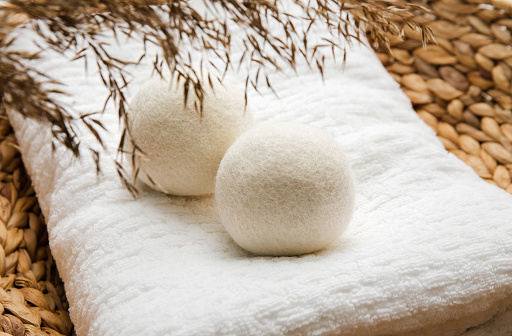
Wool has been a staple textile in human civilisation for thousands of years. Its warmth, durability, and versatility make it an ideal fabric for various garments and applications. This article delves into the journey of wool from farm to fashion, highlighting its transformation from fleece to fabric while underscoring its sustainable and eco-friendly qualities. It also explores the fascinating world of wool production and its undeniable significance throughout history.
The Origins of Wool Production
The production of wool has ancient roots, with evidence of its use in clothing dating back to 6000 BC. Sheep were initially domesticated primarily for their fleece, which provided early humans with a warm and comfortable textile. As civilisations evolved and expanded, this natural fibre became a valuable commodity, driving the development of international trade routes, shaping economies, and influencing societal growth. The impact of this versatile material on human history is both profound and enduring.
Shearing and Grading
The shearing process involves removing the fleece from a sheep, typically done annually. Modern shearing equipment ensures minimal discomfort to the animals while maintaining efficiency. Once the wool is sheared, it is graded based on various factors, such as fibre diameter, staple length, and overall quality. This grading process is crucial as it helps determine the best use for the wool and its market value.
Sheep Breeding and Wool Quality
The quality of wool is highly dependent on the sheep breed, with some breeds producing finer and softer fibres than others. Merino sheep, for instance, are renowned for their high-quality wool, which is soft, lightweight, and has excellent insulation properties. Selective breeding and crossbreeding techniques have been employed over generations to improve wool quality, increase yield, and enhance specific characteristics desired by consumers.
Wool Scouring and Carding
Before wool can be spun into yarn, it must undergo scouring and carding. Scouring effectively removes dirt, grease, and other contaminants from the fleece, while carding disentangles and aligns the fibres in preparation for spinning. The wool is then separated into slivers, long, continuous strands of aligned fibres, ready for spinning.
Spinning and Weaving
Spinning the wool slivers into yarn involves twisting the fibres together. This process strengthens the fibres and adds elasticity, making them suitable for weaving or knitting. The yarn is then woven into the fabric using techniques such as plain, twill, or herringbone weaving, creating distinct textures and patterns. These diverse weaving techniques contribute to wool’s versatility in the world of textiles.
Dyeing and Finishing
To achieve various colours and patterns, wool fabrics undergo dyeing processes. Natural dyes, derived from plants and minerals, were historically used, but today, synthetic dyes offer a more comprehensive range of hues and are more colourfast. After dyeing, the fabric is finished through processes like fulling, which involves washing and agitating the fabric to create a denser and softer texture, enhancing the fabric’s overall feel and appearance.
Design and Manufacturing
Once the wool fabric is prepared, it serves as the foundation for creating various garments and textiles. From high-end designer pieces to everyday essentials, wool is a versatile material that can be fashioned into coats, suits, sweaters, blankets, and more. Skilled craftsmen and artisans, along with innovative technologies, bring these designs to life, showcasing the beauty and functionality of this timeless textile in contemporary fashion. Indeed, the modern wool production process enables you to appreciate and utilise the unique characteristics of this ancient material in new and exciting ways.
Wool is truly a timeless textile, revered for its warmth, durability, and versatility. Its journey from farm to fashion is a testament to the ingenuity and craftsmanship that have defined human civilisation. And as you continue to seek sustainable and eco-friendly materials, wool remains a valuable and cherished resource, embodying the perfect blend of tradition and innovation in the world of textiles.
Author: Amelia
